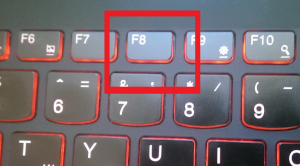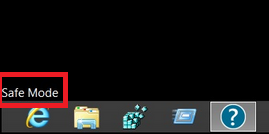Being hit by ransomware is a nightmare that all users should be scared of. Unfortunately, many ransomware victims have come to the conclusion that crypto malware works faultlessly and continues to affect thousands of users and enterprises on a daily basis.
| Name | Help recover files.txt .oorr |
| Type | Ransomware, Trojan Ransomware |
| Short Description | The ransomware encrypts files and demands payments for exchange of their decryption. |
| Symptoms | Files are encrypted and have the ‘.oorr’ prefix. |
| Distribution Method | Most likely – via backdoor access. Other options – exploit kits, spam, etc. |
| Detection tool | Download Malware Removal Tool, to See If Your System Has Been Affected By Help recover files.txt .oorr |
| User Experience | Join our forum to follow the discussion about Help recover files.txt .oorr. |
| Data Recovery Tool | Windows Data Recovery by Stellar Phoenix Notice! This product scans your drive sectors to recover lost files and it may not recover 100% of the encrypted files, but only few of them, depending on the situation and whether or not you have reformatted your drive. |
We have already seen Trojan-Ransom.NSIS.ONION.air being active in the wild, and apparently, the crypto threat is set to operate once again. Malware researchers suspect that a ransomware currently known as ‘Help recover files.txt’ is yet another variation of the Onion ransomware.
According to our research, files encrypted by Help recover files.txt/ Trojan Ransom.NSIS.ONION.air will have the oorr. prefix.
Recent information on the ransom threat reveals that the current targets are located in Bulgaria and Greece. Other neighboring countries may also be chosen by the ransom authors. Targets can be both regular users and business networks. In this article, we will try and shed a light on how the ransomware works and how to stay protected against it in the first place.
Help recover files.txt / Trojan-Ransom.NSIS.ONION.air Technical Review
If your files (videos, text documents, pictures, etc.) all have the oorr. prefix, and you also see a Help recover files.txt message, you have been hit by Trojan-Ransom.NSIS.ONION.air ransomware.
Research reveals that the ransomware enters the system with the help of backdoor access. As we have already written, the Onion ransomware is also known as CTB-Locker or Citroni. Our previous research indicates that Critoni’s services could be rented by third parties at a cost of $ 3 000. File-encrypting threats are being sold in underground forums as we speak. Anyone with even the slightest knowledge of malware can ‘rent’ a file-encrypting service and make quick money out of thin air. Sadly, ransomware has proven to be a most effective way to generate online income.
Get to know the method employed by professional and wannabe cyber criminals and read our article
How Do I Steal Money Online in 2015?
Now, let’s get back to the Help recover files.txt ransom. The message displayed by the threat contains the following information:
→”Hi,What happened to your files?mAll your files were protected by a strong encryption with RSA-2048 More information about the encryption keys using RSA-2048 can be found heres https://en.wikipedia.org/RSA What does this mean? This mean that the structure and data within your files have been irrevocably change and only we can help you to restore it. How did this happen? Especially for you, on our server was generated the secret key pair RSA-2048 – public and private. All your files were encrypted with the public key, which has been transferred to your computer via internet. Decrypting of your files is only possible with the help of the private key and decrypt program which is on our server. You can buy our tool with private key that will recover all your files. It cost’s 4 bitcoins and you need send it to bitcoin address 14mf7A1oCZ7bjpkqaoXCHp2VLRhuv***** . 1 bitcoin ~= 240 US $.You can make bitcoin payment without any bitcoin software. For this you can use one of this bitcoin exchanger from this exchange list to send us bitcoins (addresses listed). Our contact mail entry******@gmail.com . Additional contact mail entry******@india.com (email us here if we don’t answer from gmail.com). Your own personal key: J******* . Send us your own personal key after payment and we will send you decryption tool.You can send one small file (not bigger than 1 megobyte) before payment and we will recover it. It will be proof that we have decryption tool.”
Keep in mind that this message can be translated in accordance to the victim’s location and nationality. Another variable is the listed bitcoin addresses – they could vary from victim to victim. However, they are all traced back to the same attacker, with the same email addresses. Here is an image of the message in English:
According to one of the emails given by the criminals, the team may be situated in India. However, more information is needed to confirm that.
As already stated, the files encrypted by the ransomware start with a prefix ‘oorr’, followed by the original file names. Users have reported that the malicious threat affects not only the system files but also the backup drive and DropBox.
Where in the system is the ransomware hiding?
The locations typically used by ransomware are:
- %Temp%
- C:\
\ .exe - %AppData%
- %LocalAppData%
- %ProgramData%
- %WinDir%
However, one user of BleepingComputer has shared that he found the executable in the following directory:
-
Local Disc (C:)\Users\
\DateTime\date.exe
The user believes that the hackers could have broken his system using Remote Desktop Connection. One way they could have done that is by brute-forcing his password.
And now the logical question is…
How Can I Rid of Help recover files.txt / Onion Ransomware and Restore My Files?
As stated by affected users, several well-known AV solutions have failed in detecting and blocking the attack. If an AV solution is applied, it should be quite a powerful one, specialized in removing sophisticated malware.
We have already written a detailed article about the RSA encryption algorithm and how to deal with it in case of infection. Just follow the link below:
Restore Files Encrypted via RSA Encryption
Security Tip
To improve the protection against ransomware, security experts recommend using 2 external drives and back up files on a daily or a weekly basis. For precautionary reasons, the second hard drive should be kept offline.
Another thing to be tried is following the guide below. Please don’t hesitate to contact us if you have any questions. STF also welcomes all users or security experts that can help in the battle against ransomware and file-enryption. You can either use the comment field below the article, or, even better, you can join our security forum and start your own topic.
1. Start Your PC in Safe Mode to Remove Help recover files.txt .oorr.
For Windows XP, Vista, 7 systems:
1. Remove all CDs and DVDs, and then Restart your PC from the “Start” menu.
2. Select one of the two options provided below:
– For PCs with a single operating system: Press “F8” repeatedly after the first boot screen shows up during the restart of your computer. In case the Windows logo appears on the screen, you have to repeat the same task again.
– For PCs with multiple operating systems: Тhe arrow keys will help you select the operating system you prefer to start in Safe Mode. Press “F8” just as described for a single operating system.
3. As the “Advanced Boot Options” screen appears, select the Safe Mode option you want using the arrow keys. As you make your selection, press “Enter“.
4. Log on to your computer using your administrator account
While your computer is in Safe Mode, the words “Safe Mode” will appear in all four corners of your screen.
For Windows 8, 8.1 and 10 systems:
Step 1: Open the Start Menu
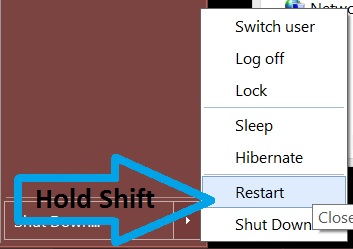
Step 2: Whilst holding down Shift button, click on Power and then click on Restart.
Step 3: After reboot, the aftermentioned menu will appear. From there you should choose Troubleshoot.
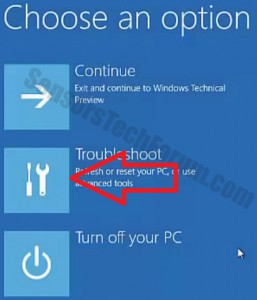
Step 4: You will see the Troubleshoot menu. From this menu you can choose Advanced Options.

Step 5: After the Advanced Options menu appears, click on Startup Settings.
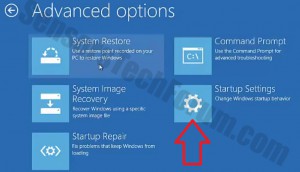
Step 6: Click on Restart.
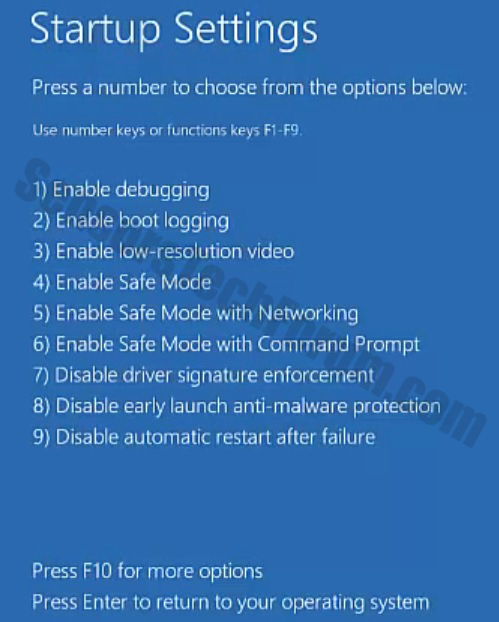
Step 7: A menu will appear upon reboot. You should choose Safe Mode by pressing its corresponding number and the machine will restart.
2. Remove Help recover files.txt .oorr automatically by downloading an advanced anti-malware program.
To clean your computer you should download an updated anti-malware program on a safe PC and then install it on the affected computer in offline mode. After that you should boot into safe mode and scan your computer to remove all Help recover files.txt .oorr associated objects.
Security engineers recommend that you back up your files immediately, preferably on an external memory carrier in order to be able to restore them. In order to protect yourself from Help recover files.txt .oorr (For Windows Users) please follow these simple steps:
For Windows 7 and earlier:
1-Click on Windows Start Menu
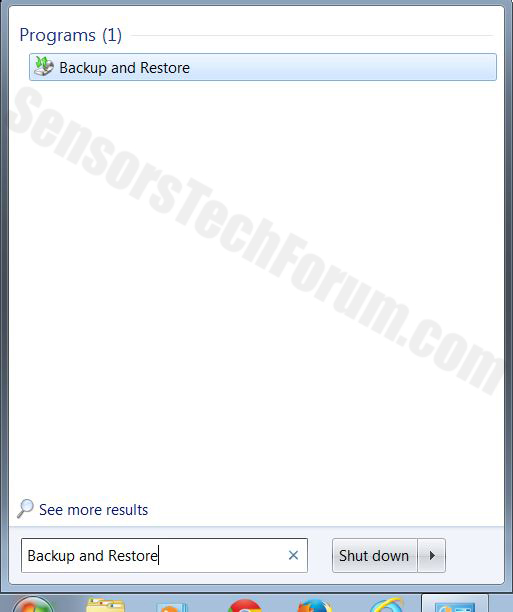
2-Type Backup And Restore
3-Open it and click on Set Up Backup
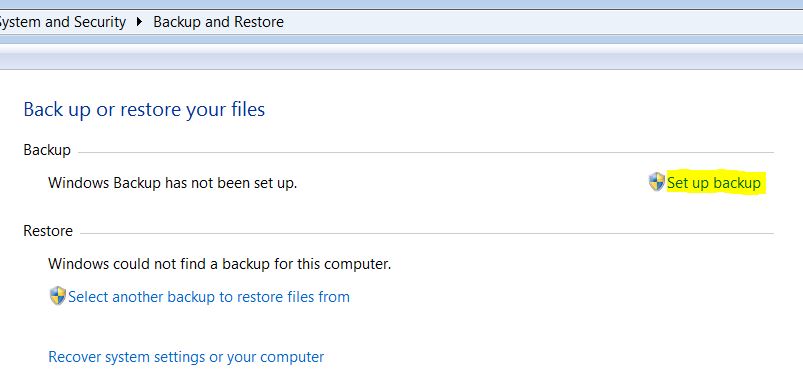
4-A window will appear asking you where to set up backup. You should have a flash drive or an external hard drive. Mark it by clicking on it with your mouse then click on Next.
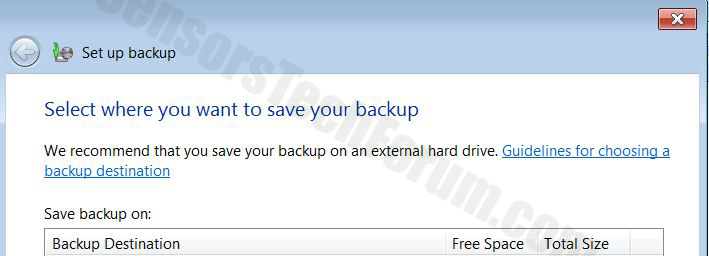
5-On the next window, the system will ask you what do you want to backup. Choose the ‘Let Me Choose’ option and then click on Next.
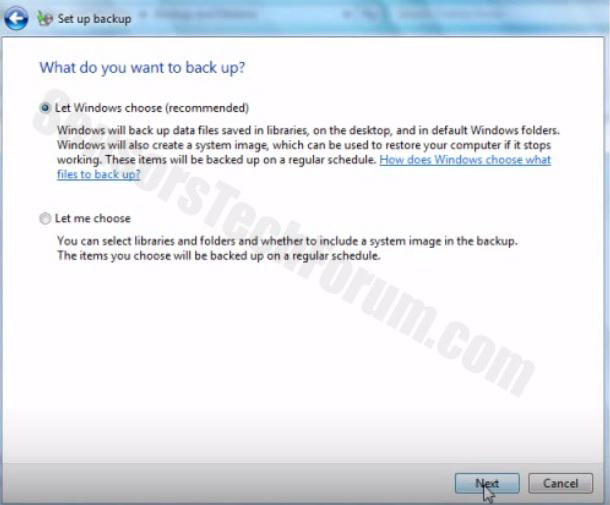
6-Click on ‘Save settings and run backup’ on the next window in order to protect your files from possible attacks by Help recover files.txt .oorr.
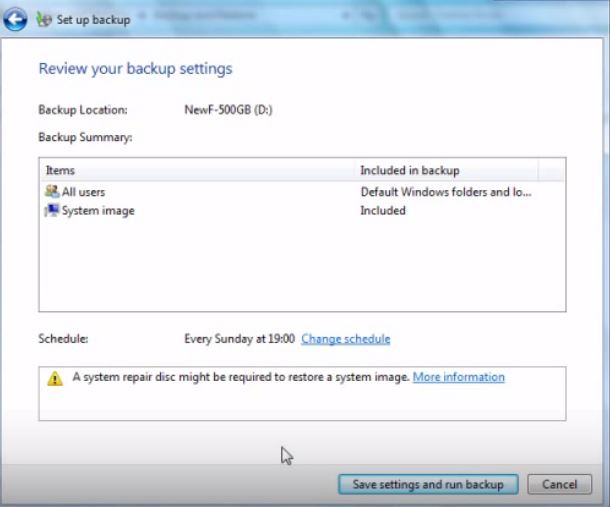
For Windows 8, 8.1 and 10:
1-Press Windows button + R

2-In the window type ‘filehistory’ and press Enter
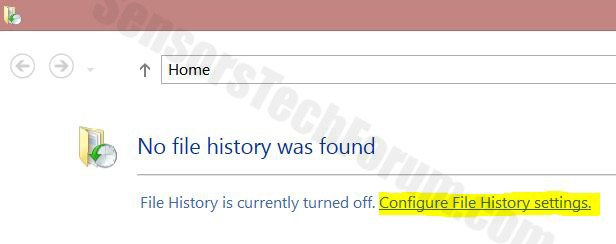
3-A File History window will appear. Click on ‘Configure file history settings’
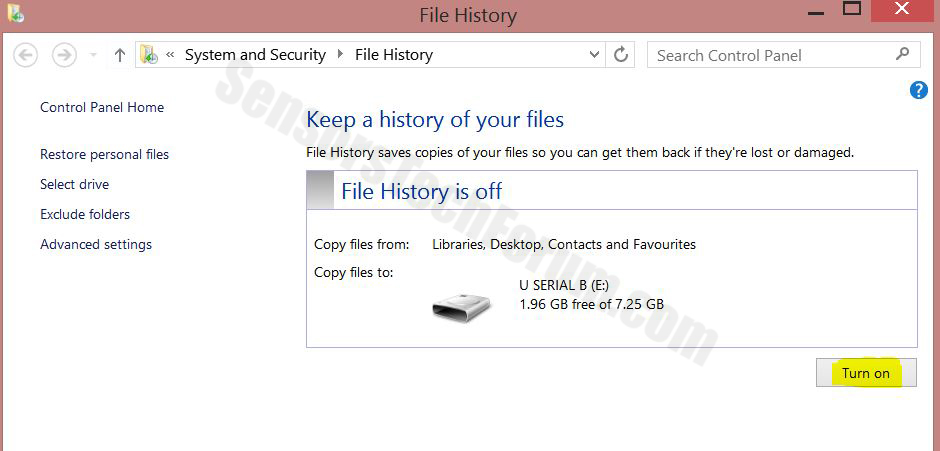
4-The configuration menu for File History will appear. Click on ‘Turn On’. After its on, click on Select Drive in order to select the backup drive. It is recommended to choose an external HDD, SSD or a USB stick whose memory capacity is corresponding to the size of the files you want to backup.

5-Select the drive then click on ‘Ok’ in order to set up file backup and protect yourself from Help recover files.txt .oorr.
Enabling Windows Defense Feature:
1- Press Windows button + R keys.

2- A run windows should appear. In it type ‘sysdm.cpl’ and then click on Run.

3- A System Properties windows should appear. In it choose System Protection.
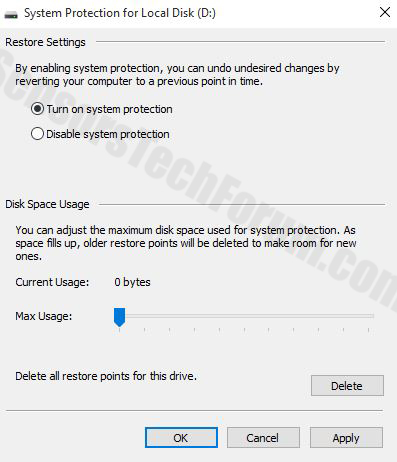
5- Click on Turn on system protection and select the size on the hard disk you want to utilize for system protection.
6- Click on Ok and you should see an indication in Protection settings that the protection from Help recover files.txt .oorr is on.
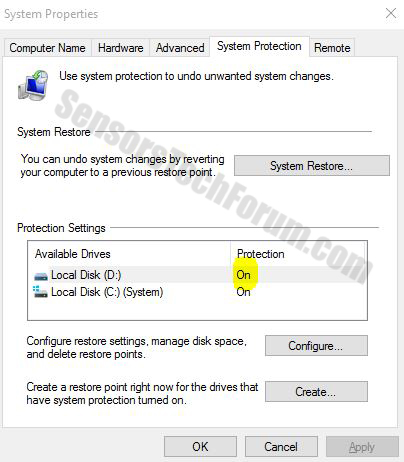
Restoring a file via Windows Defense feature:
1-Right-click on the encrypted file, then choose Properties.
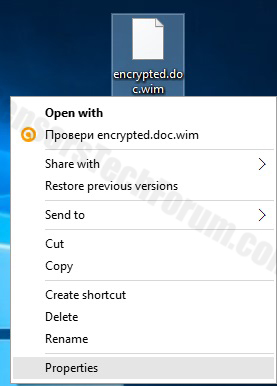
2-Click on the Previous Versions tab and then mark the last version of the file.
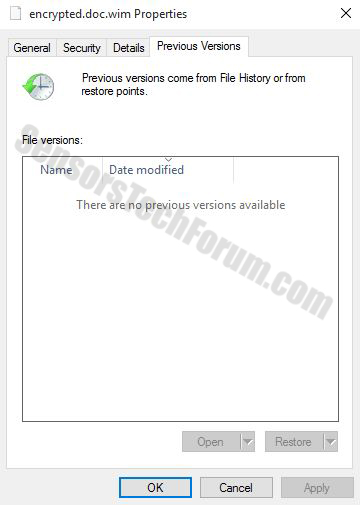
3-Click on Apply and Ok and the file encrypted by Help recover files.txt .oorr should be restored.

Spy Hunter scanner will only detect the threat. If you want the threat to be automatically removed, you need to purchase the full version of the anti-malware tool.Find Out More About SpyHunter Anti-Malware Tool / How to Uninstall SpyHunter
- Step 1
- Step 2
- Step 3
- Step 4
- Step 5
Step 1: Scan for Help recover files.txt .oorr with SpyHunter Anti-Malware Tool



Ransomware Automatic Removal - Video Guide
Step 2: Uninstall Help recover files.txt .oorr and related malware from Windows
Here is a method in few easy steps that should be able to uninstall most programs. No matter if you are using Windows 10, 8, 7, Vista or XP, those steps will get the job done. Dragging the program or its folder to the recycle bin can be a very bad decision. If you do that, bits and pieces of the program are left behind, and that can lead to unstable work of your PC, errors with the file type associations and other unpleasant activities. The proper way to get a program off your computer is to Uninstall it. To do that:


 Follow the instructions above and you will successfully delete most unwanted and malicious programs.
Follow the instructions above and you will successfully delete most unwanted and malicious programs.
Step 3: Clean any registries, created by Help recover files.txt .oorr on your computer.
The usually targeted registries of Windows machines are the following:
- HKEY_LOCAL_MACHINE\Software\Microsoft\Windows\CurrentVersion\Run
- HKEY_CURRENT_USER\Software\Microsoft\Windows\CurrentVersion\Run
- HKEY_LOCAL_MACHINE\Software\Microsoft\Windows\CurrentVersion\RunOnce
- HKEY_CURRENT_USER\Software\Microsoft\Windows\CurrentVersion\RunOnce
You can access them by opening the Windows registry editor and deleting any values, created by Help recover files.txt .oorr there. This can happen by following the steps underneath:


 Tip: To find a virus-created value, you can right-click on it and click "Modify" to see which file it is set to run. If this is the virus file location, remove the value.
Tip: To find a virus-created value, you can right-click on it and click "Modify" to see which file it is set to run. If this is the virus file location, remove the value.
Before starting "Step 4", please boot back into Normal mode, in case you are currently in Safe Mode.
This will enable you to install and use SpyHunter 5 successfully.
Step 4: Boot Your PC In Safe Mode to isolate and remove Help recover files.txt .oorr





Step 5: Try to Restore Files Encrypted by Help recover files.txt .oorr.
Method 1: Use STOP Decrypter by Emsisoft.
Not all variants of this ransomware can be decrypted for free, but we have added the decryptor used by researchers that is often updated with the variants which become eventually decrypted. You can try and decrypt your files using the instructions below, but if they do not work, then unfortunately your variant of the ransomware virus is not decryptable.
Follow the instructions below to use the Emsisoft decrypter and decrypt your files for free. You can download the Emsisoft decryption tool linked here and then follow the steps provided below:
1 Right-click on the decrypter and click on Run as Administrator as shown below:

2. Agree with the license terms:

3. Click on "Add Folder" and then add the folders where you want files decrypted as shown underneath:

4. Click on "Decrypt" and wait for your files to be decoded.

Note: Credit for the decryptor goes to Emsisoft researchers who have made the breakthrough with this virus.
Method 2: Use data recovery software
Ransomware infections and Help recover files.txt .oorr aim to encrypt your files using an encryption algorithm which may be very difficult to decrypt. This is why we have suggested a data recovery method that may help you go around direct decryption and try to restore your files. Bear in mind that this method may not be 100% effective but may also help you a little or a lot in different situations.
Simply click on the link and on the website menus on the top, choose Data Recovery - Data Recovery Wizard for Windows or Mac (depending on your OS), and then download and run the tool.
Help recover files.txt .oorr-FAQ
What is Help recover files.txt .oorr Ransomware?
Help recover files.txt .oorr is a ransomware infection - the malicious software that enters your computer silently and blocks either access to the computer itself or encrypt your files.
Many ransomware viruses use sophisticated encryption algorithms to make your files inaccessible. The goal of ransomware infections is to demand that you pay a ransom payment to get access to your files back.
What Does Help recover files.txt .oorr Ransomware Do?
Ransomware in general is a malicious software that is designed to block access to your computer or files until a ransom is paid.
Ransomware viruses can also damage your system, corrupt data and delete files, resulting in the permanent loss of important files.
How Does Help recover files.txt .oorr Infect?
Via several ways.Help recover files.txt .oorr Ransomware infects computers by being sent via phishing emails, containing virus attachment. This attachment is usually masked as an important document, like an invoice, bank document or even a plane ticket and it looks very convincing to users.
Another way you may become a victim of Help recover files.txt .oorr is if you download a fake installer, crack or patch from a low reputation website or if you click on a virus link. Many users report getting a ransomware infection by downloading torrents.
How to Open .Help recover files.txt .oorr files?
You can't without a decryptor. At this point, the .Help recover files.txt .oorr files are encrypted. You can only open them once they are decrypted using a specific decryption key for the particular algorithm.
What to Do If a Decryptor Does Not Work?
Do not panic, and backup the files. If a decryptor did not decrypt your .Help recover files.txt .oorr files successfully, then do not despair, because this virus is still new.
Can I Restore ".Help recover files.txt .oorr" Files?
Yes, sometimes files can be restored. We have suggested several file recovery methods that could work if you want to restore .Help recover files.txt .oorr files.
These methods are in no way 100% guaranteed that you will be able to get your files back. But if you have a backup, your chances of success are much greater.
How To Get Rid of Help recover files.txt .oorr Virus?
The safest way and the most efficient one for the removal of this ransomware infection is the use a professional anti-malware program.
It will scan for and locate Help recover files.txt .oorr ransomware and then remove it without causing any additional harm to your important .Help recover files.txt .oorr files.
Can I Report Ransomware to Authorities?
In case your computer got infected with a ransomware infection, you can report it to the local Police departments. It can help authorities worldwide track and determine the perpetrators behind the virus that has infected your computer.
Below, we have prepared a list with government websites, where you can file a report in case you are a victim of a cybercrime:
Cyber-security authorities, responsible for handling ransomware attack reports in different regions all over the world:
Germany - Offizielles Portal der deutschen Polizei
United States - IC3 Internet Crime Complaint Centre
United Kingdom - Action Fraud Police
France - Ministère de l'Intérieur
Italy - Polizia Di Stato
Spain - Policía Nacional
Netherlands - Politie
Poland - Policja
Portugal - Polícia Judiciária
Greece - Cyber Crime Unit (Hellenic Police)
India - Mumbai Police - CyberCrime Investigation Cell
Australia - Australian High Tech Crime Center
Reports may be responded to in different timeframes, depending on your local authorities.
Can You Stop Ransomware from Encrypting Your Files?
Yes, you can prevent ransomware. The best way to do this is to ensure your computer system is updated with the latest security patches, use a reputable anti-malware program and firewall, backup your important files frequently, and avoid clicking on malicious links or downloading unknown files.
Can Help recover files.txt .oorr Ransomware Steal Your Data?
Yes, in most cases ransomware will steal your information. It is a form of malware that steals data from a user's computer, encrypts it, and then demands a ransom in order to decrypt it.
In many cases, the malware authors or attackers will threaten to delete the data or publish it online unless the ransom is paid.
Can Ransomware Infect WiFi?
Yes, ransomware can infect WiFi networks, as malicious actors can use it to gain control of the network, steal confidential data, and lock out users. If a ransomware attack is successful, it could lead to a loss of service and/or data, and in some cases, financial losses.
Should I Pay Ransomware?
No, you should not pay ransomware extortionists. Paying them only encourages criminals and does not guarantee that the files or data will be restored. The better approach is to have a secure backup of important data and be vigilant about security in the first place.
What Happens If I Don't Pay Ransom?
If you don't pay the ransom, the hackers may still have access to your computer, data, or files and may continue to threaten to expose or delete them, or even use them to commit cybercrimes. In some cases, they may even continue to demand additional ransom payments.
Can a Ransomware Attack Be Detected?
Yes, ransomware can be detected. Anti-malware software and other advanced security tools can detect ransomware and alert the user when it is present on a machine.
It is important to stay up-to-date on the latest security measures and to keep security software updated to ensure ransomware can be detected and prevented.
Do Ransomware Criminals Get Caught?
Yes, ransomware criminals do get caught. Law enforcement agencies, such as the FBI, Interpol and others have been successful in tracking down and prosecuting ransomware criminals in the US and other countries. As ransomware threats continue to increase, so does the enforcement activity.
About the Help recover files.txt .oorr Research
The content we publish on SensorsTechForum.com, this Help recover files.txt .oorr how-to removal guide included, is the outcome of extensive research, hard work and our team’s devotion to help you remove the specific malware and restore your encrypted files.
How did we conduct the research on this ransomware?
Our research is based on an independent investigation. We are in contact with independent security researchers, and as such, we receive daily updates on the latest malware and ransomware definitions.
Furthermore, the research behind the Help recover files.txt .oorr ransomware threat is backed with VirusTotal and the NoMoreRansom project.
To better understand the ransomware threat, please refer to the following articles which provide knowledgeable details.
As a site that has been dedicated to providing free removal instructions for ransomware and malware since 2014, SensorsTechForum’s recommendation is to only pay attention to trustworthy sources.
How to recognize trustworthy sources:
- Always check "About Us" web page.
- Profile of the content creator.
- Make sure that real people are behind the site and not fake names and profiles.
- Verify Facebook, LinkedIn and Twitter personal profiles.














